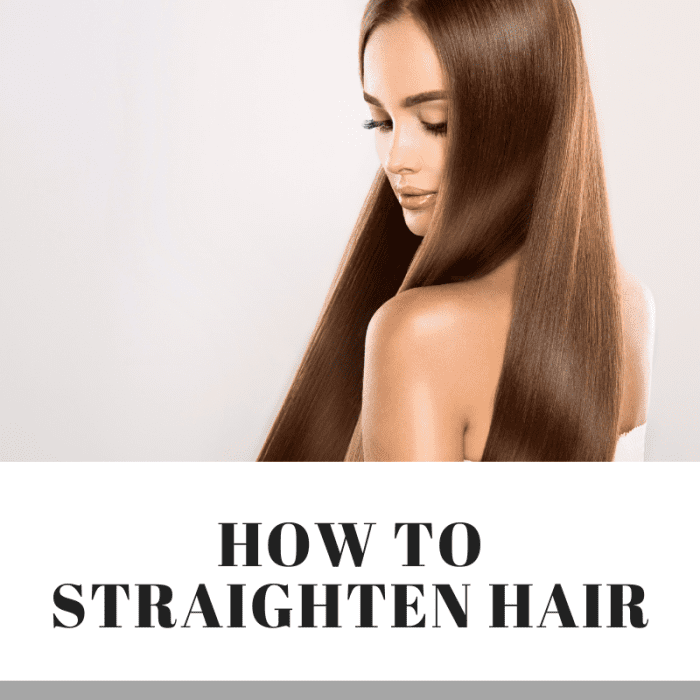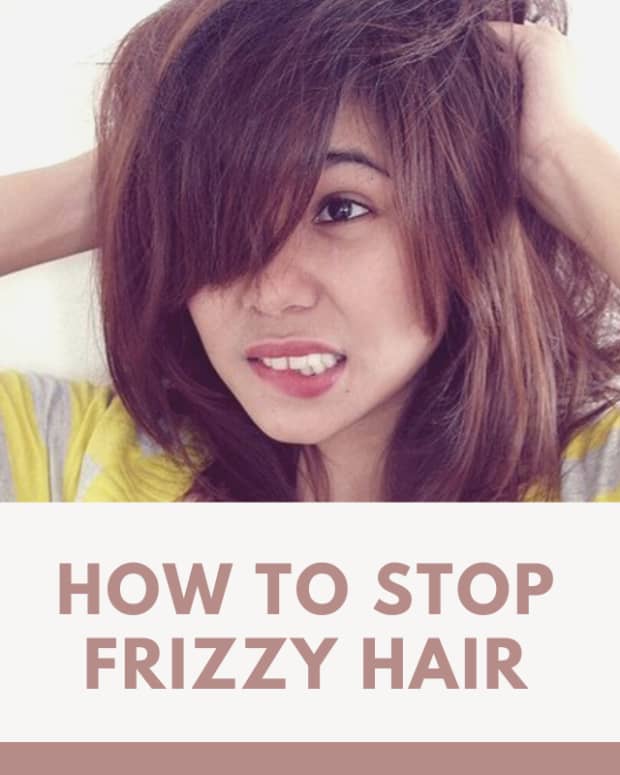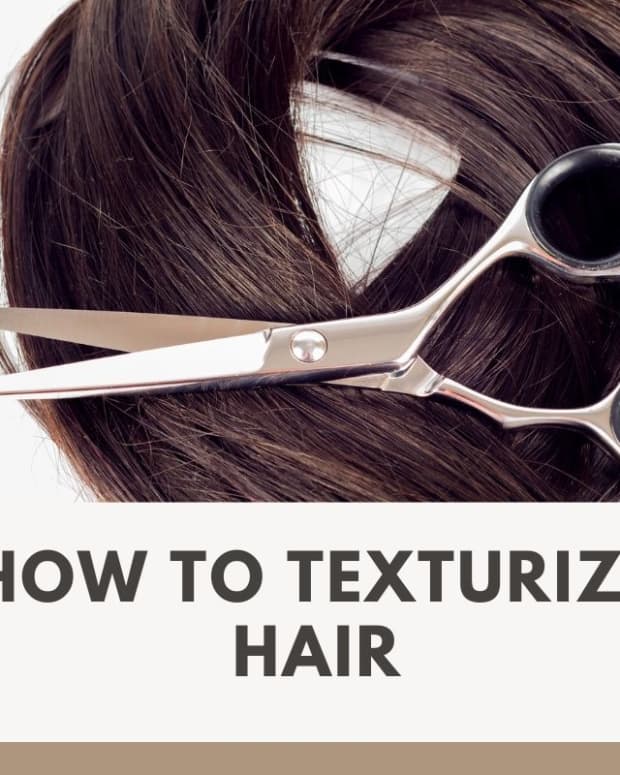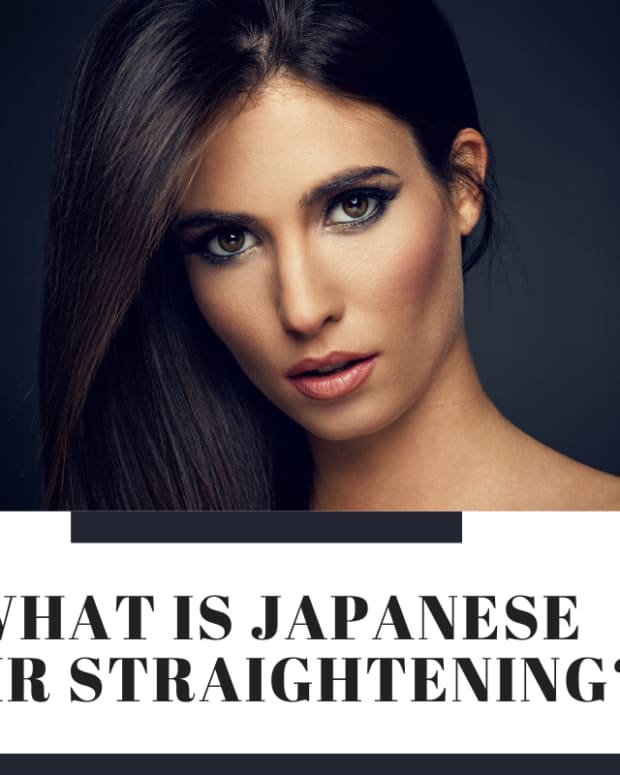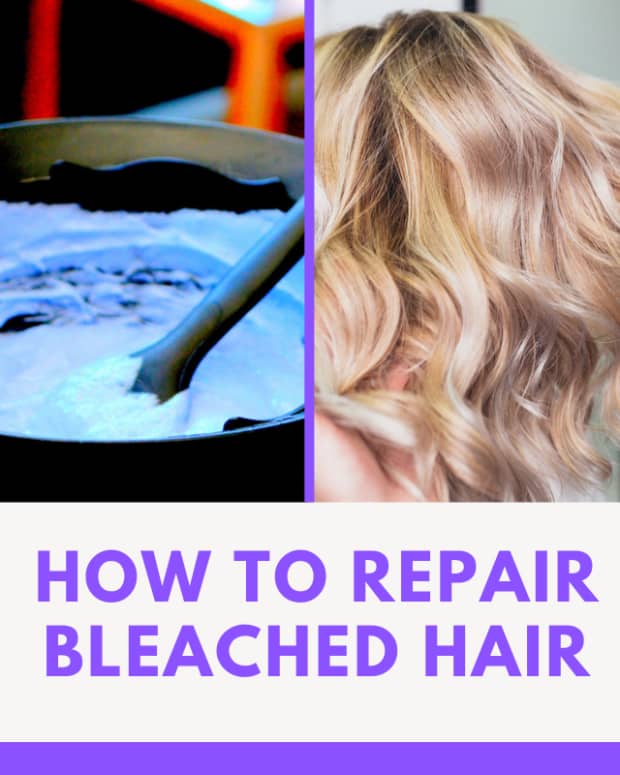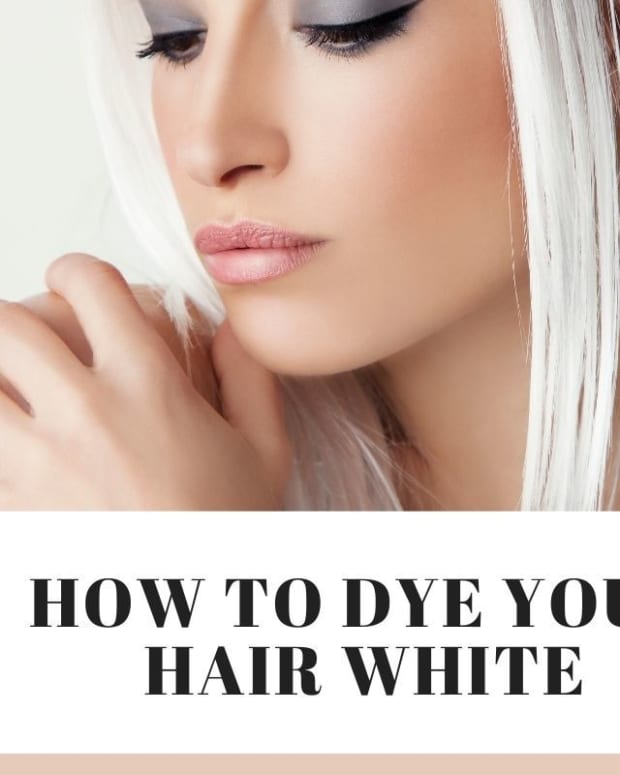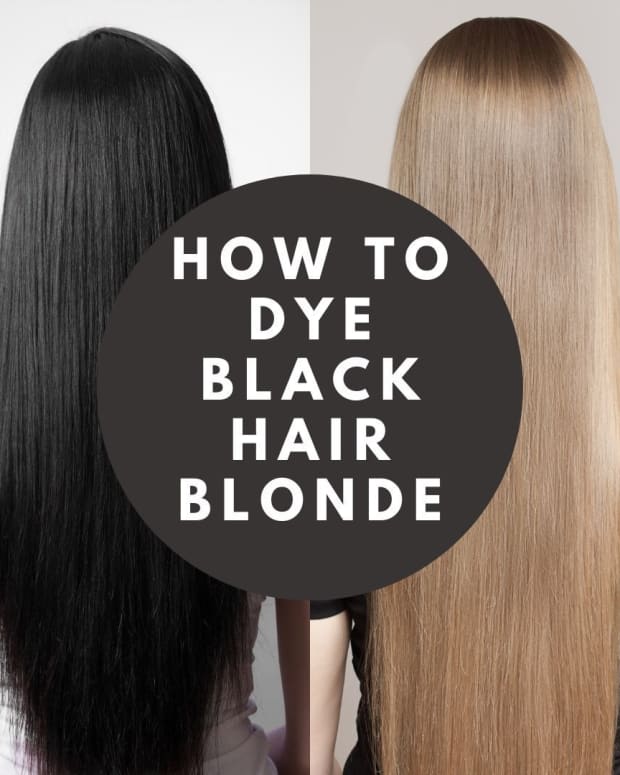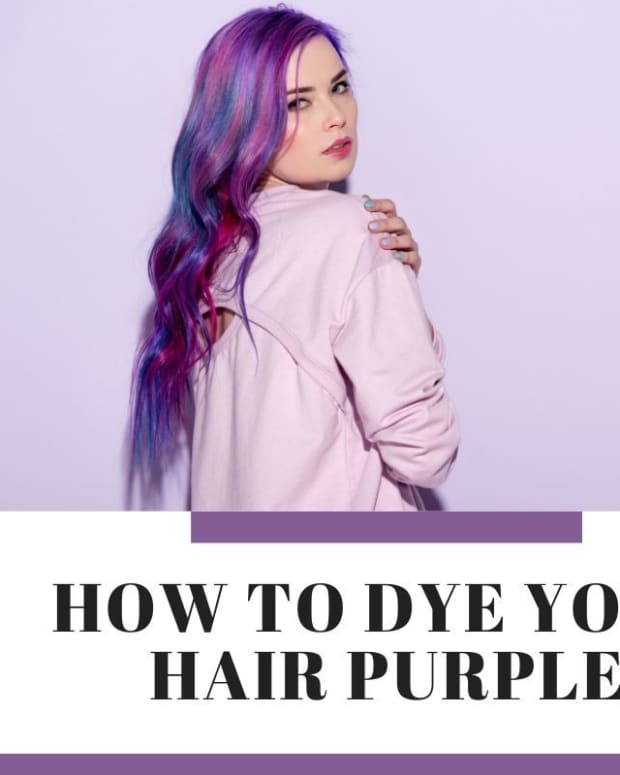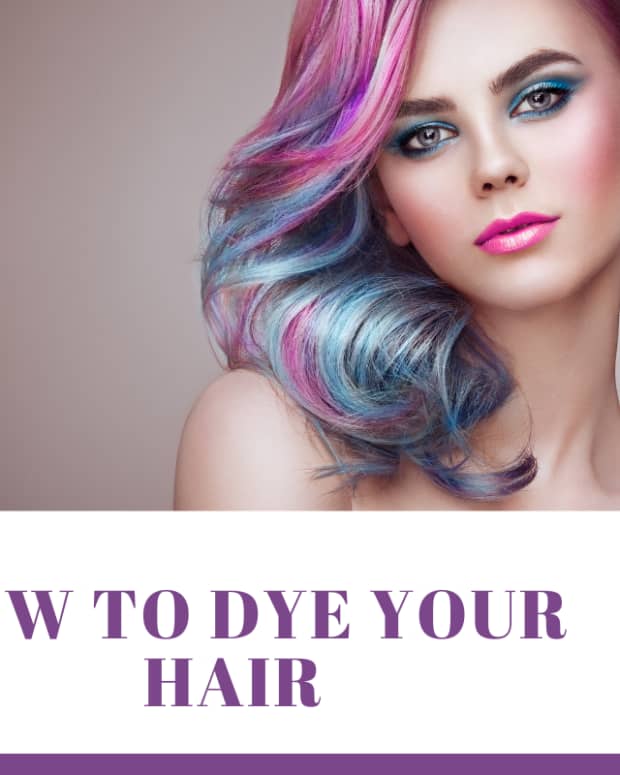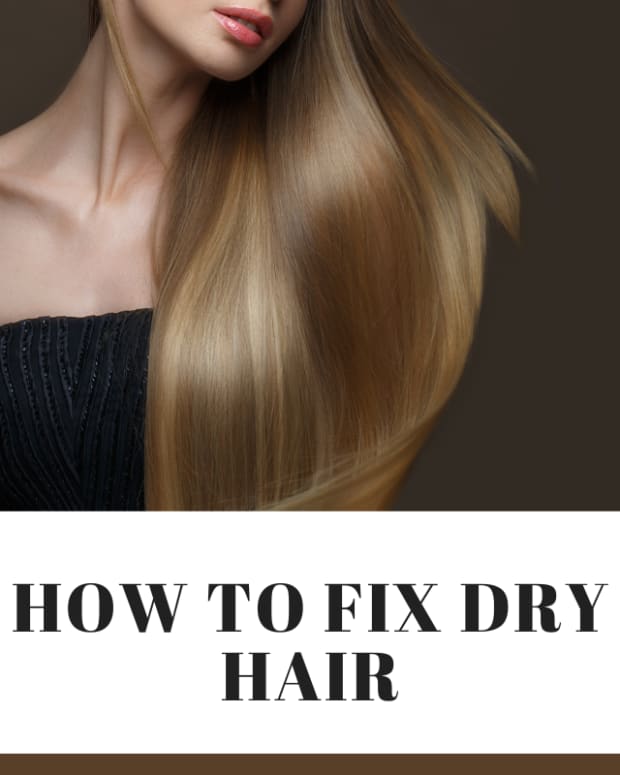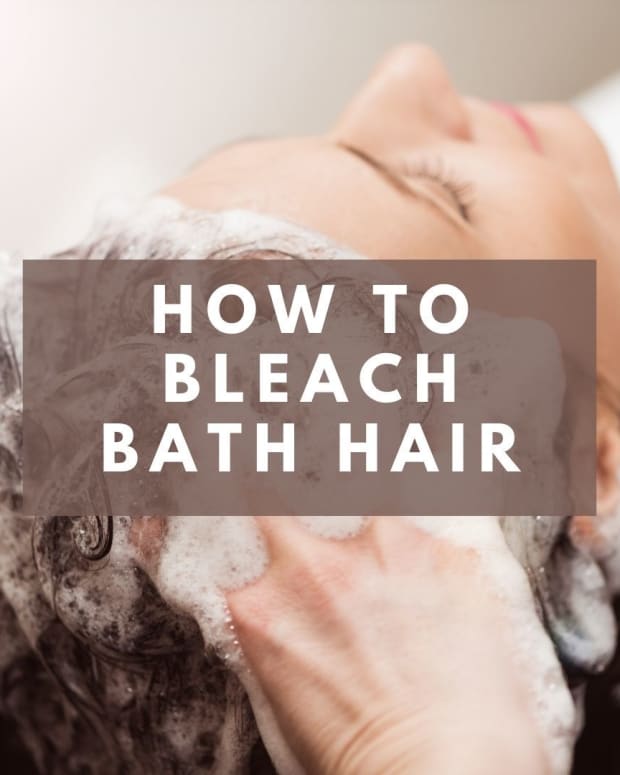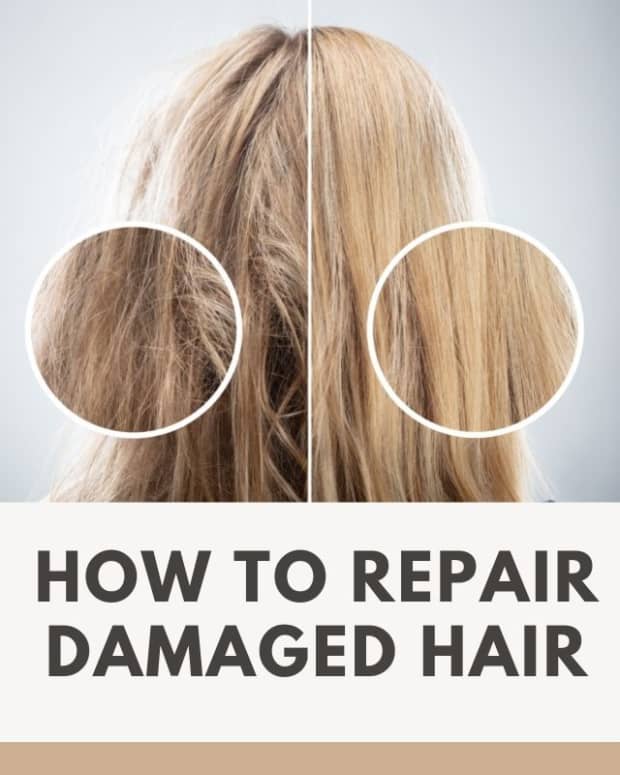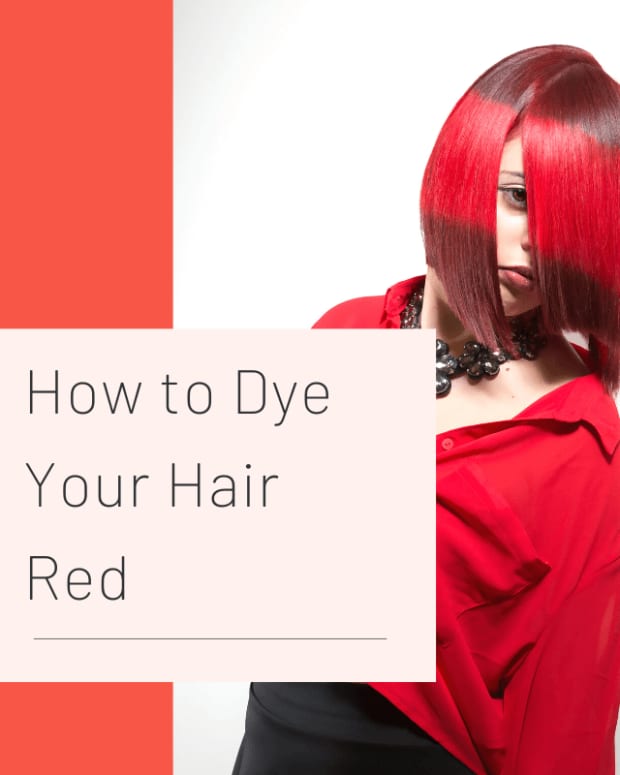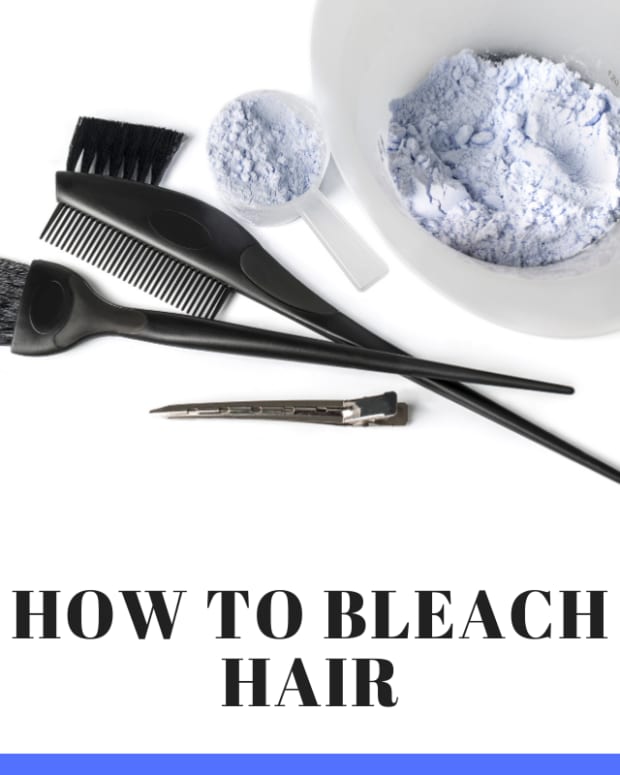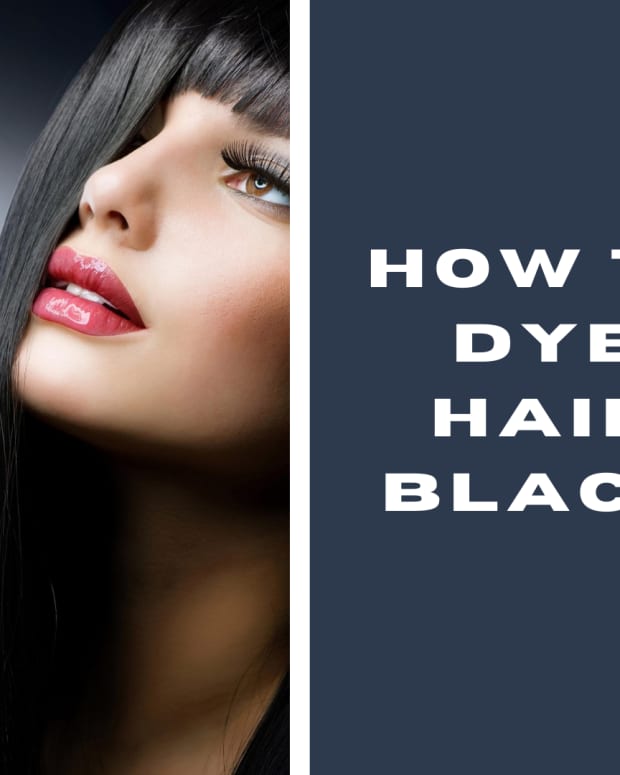How to Straighten Your Hair
I offer professional advice and knowledge about all things hair dye. Discover the terminology, chemistry, and processes behind dyeing hair.
If your hair is naturally curly or just unruly and difficult to tame in general, chances are you may have contemplated straightening it to some degree. This isn't overly difficult to do, but your results will vary depending on how you approach the straightening procedure.
Hair that is resistant to straightening can prove problematic when you want to try a brand-new style that requires it to be silky and smooth. There are a few different ways to iron out all the kinks and ringlets, and even the curliest, wildest hair can be tamed with the right styling routine and a number of useful tricks.
Temporary vs. Permanent Straightening
You can straighten your hair temporarily or permanently. Learn about both options before deciding which route is best for you.
Temporary
Temporary measures include the use of straightening irons, blow dryers, and products that smooth the hair and assist in combating frizz. These methods are effective because they use heat to create new temporary bonds in your hair, allowing you to set it into a smoother texture.
As time passes or the hair becomes wet, these bonds are destroyed and the hair returns to its previous texture and needs to be straightened again if you want to maintain the effect. Temporary hair straightening like this causes only a negligible amount of damage to the hair so it's a good way to achieve a new look without harming your hair but it does take more time out of your daily schedule to perform and maintain.
Permanent
Permanent hair straightening treatments are more intensive and can be damaging if used incorrectly. These consist of relaxers and keratin treatments, which straighten the hair through a chemical process to create a lasting effect.
For all intents and purposes, a relaxer is permanent and the hair that has been straightened will never return to its former curly texture unless it is allowed to grow out. Keratin treatments may last up to six months if the hair is properly maintained after they have been applied.
How to Choose
When deciding whether to straighten your hair permanently or temporarily, the main questions you should ask yourself are whether you want straight hair for the long-term, whether your hair is in a good enough condition to be subjected to a relaxer if this is your preferred method, and whether you can afford the cost of the permanent options. Whereas a good quality straightener may last you a few years, relaxers need to be reapplied to your new growth every few months, and keratin treatments wear off over time as you wash your hair.
The biggest drawback to using relaxers is that even though they can produce the straightest and longest-lasting result, they are highly damaging to the hair, and you can't use them if you have previously bleached your hair or dyed it excessively. Keratin treatments actually improve the condition of your hair while straightening it when applied correctly, but they are expensive, generally require a trip to the salon for the best result, and don't last as long as a relaxer. They are an inexpensive option if you're confident enough to use them at home.
If you can't bear the thought of being stuck with straight hair for months at a time, it's best to go down the straightening iron route. While the use of heated styling tools is slightly damaging to your hair, you can negate this by using heat-protecting products like a good hair serum.
In a nod to convenience, these products are the same ones you'll generally use to smooth and straighten your hair. Smoothing serums contain silicones, which are the most effective compounds to prevent heat damage to your hair and also incredibly beneficial to make your hair smoother and shinier.
How Long Will Your Straight Hair Last?
| Straightening method | Durability |
|---|---|
Flat iron | 1–3 days |
Keratin treatment | Up to 6 months |
Relaxer | Permanent |
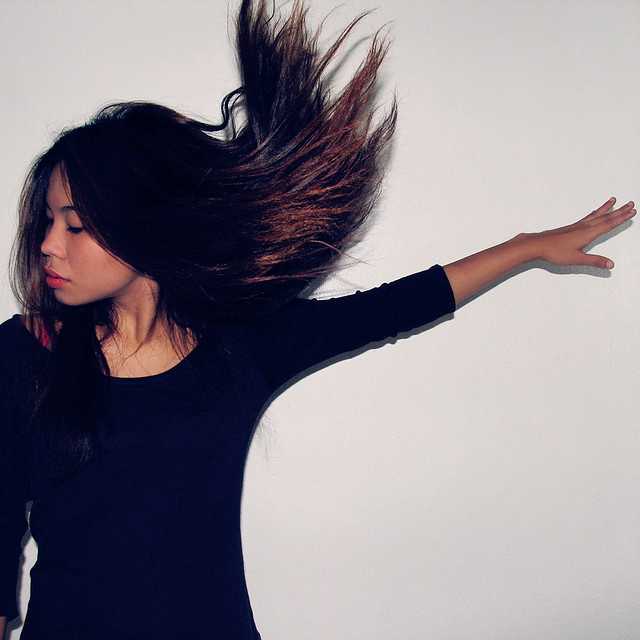
More permanent straightening methods cost more but may save you time and money in the long term if you know you want straighter hair.
How to Use a Hair Straightener
The process of straightening your hair with a hair straightener isn't too difficult. The main concept to grasp here is that while simply running the straightener through your hair will straighten it, it won't be perfect. In order to achieve the sleekest, straight hair with a hair straightener, you need to actually section your hair and pass the hair straightener over individual sections rather than just grab clumps of hair by hand.
When you straighten your hair in sections, the hair is handled in a way that allows you to begin close to the root, and comb the hair out as you straighten it. Beginning the process closer to the scalp means there will be fewer kinks and unwanted body that remains in the final result.
The very act of combing each section out as you straighten it helps to prime the hair into position before the hair straightener's plates have even passed over it. The same way you wouldn't iron over clothing that is bunched up, you shouldn't just grab chunks of hair that haven't been combed out into position and prepared properly.
To use a hair straightener for a professional and smooth result, begin by sectioning out the top layers of your hair until the bottom layer is isolated. You can roll the hair on top of your head into a twist and clip it in place to ease this process. As you straighten the bottom layer of hair you should hold the section of hair using a comb, passing the comb through your hair at the same time that you pass the hair straightener over it. The idea is that the comb leads, removing tangles and straightening out the hair as the hair straightener follows after, heating up the hair and setting it into the new texture.
Read More From Bellatory
Once you've completely straightened this first layer, release the next layers in sequence and work your way up until you've straightened all your hair. If you find it easier, you can reverse the process and work from the top of your hair down. The direction you follow when straightening through layers is completely up to you and you should work in the direction that gives you the best results and workability.
This entire straightening process can be completed without the use of products, but for the smoothest results and to protect your hair from potential heat damage, it is suggested to use a smoothing serum. The silicone compounds in smoothing serums relieve tangling and frizz, leave the hair feeling smoother, and prevent heat damage. They will also protect your hair from the humidity, helping maintain your straight hairstyle for longer.
Hair Straightening Tools
To achieve great looking hair, be sure to have the following available beforehand:
- Sectioning clips
- Fine-toothed tail-comb
- Smoothing serum/straightening spray
- Quality hair straightener: GHD, Sedu, Bio Ionic, Silver Bullet, etc.
Style and Movement
Unless you're intentionally going for the poker-straight style, straight hair doesn't have to be completely flat. To make the most of straight hair, cut your hair in layers or add subtle flicks, root volume, and feathered texturization to increase the movement of your hairstyle.
The way you use tools like your straightening iron can also help to prevent your style from looking bland and it's good to get in the habit of adding a little movement to your style by shaping hair sections slightly inwards or outwards as the style dictates. This will give the absolute best result when straightening hair with an iron so that it looks softer and more natural.
Hair Relaxers
A hair relaxer is the most permanent way to straighten your hair because the chemical process that takes place actually changes the bonds in your hair. The chemical bonds of the protein in your hair are what create the texture, and in the case of curly hair, more disulfide bridges cause the hair to curl up.
Hair relaxers permanently straighten hair by breaking these bonds and then reforming new bonds while the hair is sectioned out in flat layers. Once the product is washed out and the chemical process is stopped, the hair is reset into a straight texture and this process is considered permanent until the treated hair grows out and your natural texture grows back in.
If you're considering permanent straightening through the use of a hair relaxer, unless you have hairdressing experience or a friend who does, you shouldn't attempt the process at home. Hair relaxers are very caustic because they often contain chemicals like sodium hydroxide, and when used by someone inexperienced in their use, there is a very serious risk of chemical burns to the scalp, blindness upon contact with eyes, and severely damaged hair.
The relaxing process itself is also difficult to perform on your own hair as you need to work quickly and apply it as evenly as possible to ensure all the hair is straightened properly and you don't over-process and damage sections of hair. This is difficult when it's your own head and you don't have a full reach or view of your hair.
You also should not apply a relaxer to hair that has been bleached or even dyed a few times. Hair that is already damaged or has been subjected to extensive chemical treatments isn't likely going to hold up to a highly damaging procedure like a relaxer. Even if your hair is in good condition but is thin or fine, you shouldn't subject it to a relaxer because your hair is already fragile.
If you want to actually use a relaxer to straighten your hair, the best idea is to visit a hairdresser to have the product applied properly. Hair relaxers and perming solutions are products you don't want to mess with if you don't know how to use them. Specifically, for the best results find a hairdresser who is highly experienced in their use because not every salon performs services like this regularly either, least of all with the popularity of keratin treatments and other alternatives these days.
Thermal Reconditioning
Thermal reconditioning is another method of permanent hair straightening. It's also known as Japanese hair straightening and works similarly to relaxers but with less damage.
It's still a very damaging treatment to have done on your hair, however, and it's not the right choice for everyone. Whether you should get it depends on how healthy your hair is and how you like to style it.
Keratin Treatments
Keratin treatments offer long-lasting straightening like a hair relaxer. The main difference is that whilst a relaxer breaks down and resets bonds in your hair permanently, keratin treatments reset the texture of your hair by adding new temporary bonds that straighten it out.
A unique benefit of keratin treatments compared to relaxers is that they actually strengthen the hair and repair damage when used properly because the keratin used in the treatment reinforces lost or damaged keratin in your own hair. Keratin straightening treatments aren't completely without risk though.
The longest-lasting variants of keratin treatments used formaldehyde in the formulation, and this can be dangerous to your health if used incorrectly. Luckily, the use of this chemical has largely been phased out in recent years and replaced with a much safer alternative but some products rarely do still contain it.
To avoid harming yourself, you should always use keratin treatments that are free of formaldehyde when you use them at home. The formaldehyde-free variants are without danger, but the products designed for home use like this do not last as long. If you want a keratin treatment that lasts longer, have it done at a salon using one of the newer long-lasting forms of treatment that do not contain formaldehyde to guarantee your safety and results.
How to Apply a Keratin Treatment at Home
To use keratin treatments at home, all you need is a blow dryer, a comb, sectioning clips, and a hair straightener that can reach a high temperature. Usually, you will need to straighten your hair at 230 degrees Celsius (446 degrees Fahrenheit), to set the treatment, but lower temperatures will still work if your straightener can't heat up that high.
Before applying a keratin treatment, you will need to wash your hair with a clarifying shampoo to remove all product buildup and ensure the keratin treatment can be absorbed properly. The treatment needs to be applied to damp hair after towel-drying, and you should do this in a well-ventilated area. Avoid applying the product directly to the scalp and once applied, comb through your hair to spread it evenly and flatten out your hair.
After the keratin treatment is applied, the keratin treatment needs to be heated while in your hair and allowed to set over at least 3 days. To do this, start by blow-drying your damp hair with the treatment applied, brushing it whilst you dry it to help it dry straight. Once fully dry, heat up your hair straightener and straighten your hair at a high temperature in layers until it is flawlessly straight. If you don't straighten it meticulously, it will affect your final results because your hair will set into the style you achieve now.
Once the keratin treatment has been set into your hair and your hair is completely straight, you will need to keep your hair straight for 3 days. During this time, you can't wash the product out early if you want the best results, which means no shampooing until the time is up and avoiding moisture like the plague.
Avoid all forms of moisture like steam from showers and cooking, rain, and humid air, protecting your hair with a plastic shower cap when you bathe. If at any point your hair kinks or develops signs of curling during this time, straighten it again with your hair straightener until it is flawless once more.
After the 3 days is up, you can finally rinse out the product. You'll find that once the product has been removed and you dry your hair, it will no longer develop a curl or wave. This is because the keratin has set into the hair and integrated with your own keratin.
In order to keep your hair like this for longer, use shampoos and hair products that do not contain sodium chloride and don't swim in saltwater. Apart from that, you won't have to do any other maintenance to keep your hair straight and it will last from 2–6 months before it needs to be treated again.
What Is Keratin?
Hair is comprised of a protein called keratin. It is this keratin that forms the structure of hair, and the bonds between the keratin cause your hair to have a straight or curly texture. Relaxers break and reset the bonds in the keratin to straighten hair, and keratin treatments form new temporary bonds to reach the same end result.
More Information
- How to Use Hair Serums
Hair smoothing serums have a multitude of benefits. Find out what they are and how to use them. - How to Save Damaged Hair
Stressed hair doesn't have to be cut off. With the right care and effective treatments, you can repair damaged hair back to its former strength and beauty...
Whether your hair is curly or straight, there are a variety of different styles to try that suit your natural texture. If you feel like a change, however, you can straighten it temporarily or permanently. What you do with your hair is a matter of individual taste, but the key is always to prevent damage and treat your hair with respect in order to have hair that looks and feels amazing.
Do you have a question about straightening your hair or an experience to share? Leave a comment for tailored advice and share your insight with other readers.
This content is accurate and true to the best of the author’s knowledge and is not meant to substitute for formal and individualized advice from a qualified professional.
© 2014 Maffew James
Comments
Noc on March 31, 2017:
I am constantly dyeing my hair and it became frizzy and unmanagable. I want it to become straight again but I am afraid to get my hair relaxed because they say it will damage my hair more. What can I do to straighten my hair without using hair straightener?

